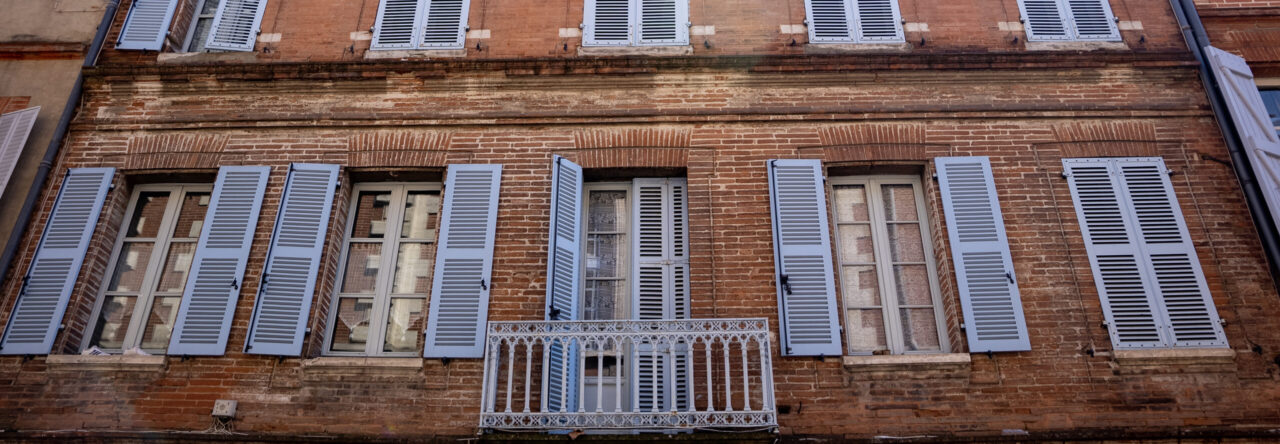Équipe éditoriale : Phoebe, Isabelle, Katherine, Ryan A., James.
La grève à l’université
Cela fait presque deux mois que la plupart d’entre nous n’a pas eu de cours à l’Université Toulouse Jean Jaurès. Quand on est arrivé en janvier, certains des professeurs et des étudiants faisaient grève déjà depuis quelques semaines parce qu’ils étaient contre la fusion avec d’autres universités toulousaines et aussi contre la sélection à l’entrée de l’université, ce que le président Macron veut introduire comme faisant partie de son programme politique.
Un phénomène qui existe dans les universités françaises qui n’existe pas dans celles aux États-Unis est celui des Assemblées Générales (ou AG pour faire court) qui permet à une petite partie de la population universitaire de décider de ce qui va se passer pour toute l’université. C’est là où les participants décident des actions à mener pour la grève, ce qui est devenu un blocus complet dans notre cas à UT2J. Tout le monde est rassemblé dans l’amphi où chacun peut écrire sa question qui sera lue au micro. Ces réunions ont aussi comme but d’informer, comme ça chacun peut se faire sa propre opinion. L’esprit de la grève et la culture du débat sont très forts en France, mais il me semble que c’est beaucoup plus fort au Mirail. On se dit souvent que ce type de blocage complet ne pourrait pas se faire dans une université américaine.
La grève des cheminots
Pendant que nous écrivons ce blog, nous sommes en route vers Paris en bus plutôt qu’en train à cause des grèves SNCF. Au début du semestre, c’était planifié d’aller à Paris le 14 avril en train, mais il y a un mois, un emploi du temps pour les grèves SNCF a été publié. Entre avril et juin il y aura entre 2 et 4 journées de grèves SNCF chaque semaine incluant le 14 avril. C’est pourquoi on voyage en bus aujourd’hui, le 13 avril. Notre situation n’est pas trop exceptionnelle. Beaucoup de monde en France est touché par ces grèves.
Les grèves SNCF sont surtout à cause des changements proposés par le président Macron. Historiquement, les travailleurs de la SNCF ont reçu beaucoup de bénéfices et de vacances parce que leur travail était très difficile et physique. Aujourd’hui, la nature de ce travail a beaucoup changé grâce à la technologie. Macron voudrait mettre en place des réformes économiques en incluant la réduction des bénéfices et des vacances, ainsi qu’une retraite plus tardive. Comme on peut le voir, les travailleurs de la SNCF sont très fâchés avec ces changements potentiels. Au moins, pour nous, ces grèves veulent dire que nous avons une journée de plus à Paris !
La grève n’empêche pas de se cultiver
Affirmer qu’un trajet en bus de neuf heures de Toulouse à Paris est agréable serait difficile. Cela dit, les étudiants de Jean Jaurès n’ayant pas eu de cours pendant six semaines, nous sommes ravis de reprendre nos études dans la capitale du pays. En particulier, notre visite à l’Assemblée Nationale permettra d’éclairer les processus gouvernementaux et les politiques qui ont donné lieu à cette période de grève pour les universités et pour les transports. C’est une occasion rarement offerte aux Parisiens, encore moins aux citoyens français et nous espérons profiter pleinement de la visite. En effet, la plupart des événements prévus pour notre séjour à Paris sont hors des sentiers battus et spécifiques pour notre groupe. Le dimanche matin, nous visiterons le Centre Pompidou avant son ouverture et suivrons une visite guidée qui permettra de découvrir quelques-unes des plus grandes œuvres d’art moderne et contemporain au monde. Ayant déjà accompli un projet sur l’art moderne et l’art contemporain plus tôt dans le semestre, ce sera une occasion parfaite pour poursuivre nos études. Notre aventure dans les arts ne s’arrête pas à notre visite au Centre Pompidou. Le mardi soir, nous serons transportés au théâtre français du XVIIIe siècle par Le jeu de l’amour et du hasard de Marivaux au Théâtre de la Porte Saint-Martin. La comédie romantique de Marivaux, utilisant des personnages de la Commedia dell’arte, améliorera notre compréhension non seulement de la langue française, mais aussi de l’humour français. À tout le moins, notre séjour à Paris nous permettra de mieux connaître une autre ville de France et de compléter notre intégration dans la langue et la culture françaises.

 D’après l’expérience de Devin et Colby, la bureaucratie est une partie importante du système universitaire français. Colby remarque par exemple que quand on a besoin de la signature d’une personne et qu’un bureau a des heures d’ouverture restreintes (notamment aux heures où les étudiants ont cours, avec une longue pause pour déjeuner), c’est difficile de trouver la personne dont on a besoin. Rien n’est en ligne et certains secrétariats semblent fermer de façon aléatoire. Devin vit un peu la même chose dans les bibliothèques. Les bibliothèques de la ville sont interconnectées, mais le système qui dit si un roman est disponible ne dit pas s’il l’est dans la même bibliothèque. Donc, même si le système dit qu’un roman est disponible, il pourrait être nécessaire de visiter une autre bibliothèque dans la ville. Pour les deux expériences, la réaction française est la même : les hôtes de Devin ont trouvé que sa réaction était drôle. Pour Colby, la réaction commune est que « c’est la France. »
D’après l’expérience de Devin et Colby, la bureaucratie est une partie importante du système universitaire français. Colby remarque par exemple que quand on a besoin de la signature d’une personne et qu’un bureau a des heures d’ouverture restreintes (notamment aux heures où les étudiants ont cours, avec une longue pause pour déjeuner), c’est difficile de trouver la personne dont on a besoin. Rien n’est en ligne et certains secrétariats semblent fermer de façon aléatoire. Devin vit un peu la même chose dans les bibliothèques. Les bibliothèques de la ville sont interconnectées, mais le système qui dit si un roman est disponible ne dit pas s’il l’est dans la même bibliothèque. Donc, même si le système dit qu’un roman est disponible, il pourrait être nécessaire de visiter une autre bibliothèque dans la ville. Pour les deux expériences, la réaction française est la même : les hôtes de Devin ont trouvé que sa réaction était drôle. Pour Colby, la réaction commune est que « c’est la France. »
 Devin passe par H & M, une boutique connue et fréquentée par les jeunes et les étudiants. Bien que cette boutique existe aussi aux États-Unis, la différence est évidente par le style vestimentaire des clients à l’intérieur.
Devin passe par H & M, une boutique connue et fréquentée par les jeunes et les étudiants. Bien que cette boutique existe aussi aux États-Unis, la différence est évidente par le style vestimentaire des clients à l’intérieur. Bien que sa prof guide les étudiants, ils ne sont pas pour autant amis et donc le lien est plutôt professionnel. Une de ses profs a souligné l’importance de choix que ces étudiants possèdent : « si vous êtes dans cette salle, vous êtes ici pour apprendre. Vous avez le choix. Vous pouvez quand même rester au lit. Mais vous avez choisi d’apprendre. » Ce rapport produit une dynamique dans laquelle les étudiants ne sont ni dorlotés ni traités avec condescendance. En plus, les parents ne paient pas de frais de scolarité. C’est-à-dire que, les étudiants sont les seuls patrons de ce fardeau ou cadeau qu’est la scolarité. En bref, les petites quantités d’examens administrés donnent responsabilité aux étudiants de comprendre le sujet sans incitation d’une note de participation ou de présence. Par conséquent, c’est la décision de l’étudiant français de poursuivre la connaissance et entre ses profs et lui, il existe un égard mutuel.
Bien que sa prof guide les étudiants, ils ne sont pas pour autant amis et donc le lien est plutôt professionnel. Une de ses profs a souligné l’importance de choix que ces étudiants possèdent : « si vous êtes dans cette salle, vous êtes ici pour apprendre. Vous avez le choix. Vous pouvez quand même rester au lit. Mais vous avez choisi d’apprendre. » Ce rapport produit une dynamique dans laquelle les étudiants ne sont ni dorlotés ni traités avec condescendance. En plus, les parents ne paient pas de frais de scolarité. C’est-à-dire que, les étudiants sont les seuls patrons de ce fardeau ou cadeau qu’est la scolarité. En bref, les petites quantités d’examens administrés donnent responsabilité aux étudiants de comprendre le sujet sans incitation d’une note de participation ou de présence. Par conséquent, c’est la décision de l’étudiant français de poursuivre la connaissance et entre ses profs et lui, il existe un égard mutuel.
 bags in France. In many grocery stores in French, the cashiers do not give out plastic bags for bagging food. In fact, if you do not bring your own bag, you can buy a reusable bag at the cash register for a few euros. A student, Isy, notes that “Normally these bags are made with paper, they do not exist in many groceries or stores that give people free plastic bags. There are types of plastic bags still exist in France which have not been banned and such bags can be used for fruits and vegetables. These bags must meet the minimum standard of being a biosourced material and must compostable. With this change, France has gotten rid of millions of plastic bags that could potentially pollute the enviroment.
bags in France. In many grocery stores in French, the cashiers do not give out plastic bags for bagging food. In fact, if you do not bring your own bag, you can buy a reusable bag at the cash register for a few euros. A student, Isy, notes that “Normally these bags are made with paper, they do not exist in many groceries or stores that give people free plastic bags. There are types of plastic bags still exist in France which have not been banned and such bags can be used for fruits and vegetables. These bags must meet the minimum standard of being a biosourced material and must compostable. With this change, France has gotten rid of millions of plastic bags that could potentially pollute the enviroment. The French have an individual relationship, and also a social relationship regarding the use of cigarettes. Compared to the United States, one observes that there are many more smokers in France and you can see a culture that is more tolerant of smokers. As Nadia observed, “…In the United States, there is a sort of prejudice against people who smoke, especially close to children. But here, in Toulouse, there is not this same mentality. I have made some French friends and they told me that they smoke for its social aspects. Often, when a friend leaves to smoke a cigarette, the others leave with them to continue the conversation. » As Nadia remarked well, it is clear to see there is a more social aspect than one that is more attentive to the environment and health. In the United States, people think more about the negative consequences of smoking and that the social aspect is not a reason that is more imprtant than health considerations.
The French have an individual relationship, and also a social relationship regarding the use of cigarettes. Compared to the United States, one observes that there are many more smokers in France and you can see a culture that is more tolerant of smokers. As Nadia observed, “…In the United States, there is a sort of prejudice against people who smoke, especially close to children. But here, in Toulouse, there is not this same mentality. I have made some French friends and they told me that they smoke for its social aspects. Often, when a friend leaves to smoke a cigarette, the others leave with them to continue the conversation. » As Nadia remarked well, it is clear to see there is a more social aspect than one that is more attentive to the environment and health. In the United States, people think more about the negative consequences of smoking and that the social aspect is not a reason that is more imprtant than health considerations.


